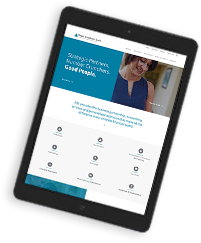By Becky Watson, CPA, Audit Manager
ASL Construction Group
The end of the year is coming fast and with it comes the requirement to adopt FASB ASC Topic 606 Revenue from Contracts with Customers by all calendar year-end private companies (this standard was applicable to public companies for calendar year 2018). If you have not yet implemented the new accounting standard, here are a few items to consider. (more…)
Challenges in keeping up with GAAP have never been greater, with pervasive changes in revenue recognition requirements set to hit most private companies this year, to be closely followed next year by getting most leases on the balance sheet for the first time. These confusing standards, along with the usual host of less widespread financial reporting changes, are daunting (to say the least). (more…)
By Josh Cross, CPA, Principal
ASL Construction Group
Sometimes the hardest part of any major implementation project is figuring out where to start.
How about we start with trying to identify the most appropriate implementation method for your construction company. One of the questions we get all the time is: Which implementation method is best for my company? Unfortunately, there is no universal answer, but we will give you some insights into what we are hearing within the industry. (more…)
By Josh Cross, CPA, Principal
After all the research and analysis put in working through the prior four steps, you are now able to begin the process for recognizing revenue for the transaction price (Step 3) which has been allocated to each performance obligation (Step 4).
Each performance obligation identified in Step 2 can be satisfied by either the transfer of a promised good or by performing a service to the customer. This distinction will be the main driver for the next decision that needs to be made, and that is, whether the revenue needs to be recorded over time or at a point in time. For a good majority of the identified performance obligations, a good or service will be transferred/consumed over a period of time and therefore revenue would be recognized over that same time period. ASC 606 has helped in this analysis by providing guidance, so to recognize revenue over time, one of the following criteria needs to be met: (more…)
If you have been following Steps 1 (Identify the Contract with the Customer) through 3 (Determining a Transaction Price), of the revenue recognition update as eagerly as I have, then I am sure that you keenly await the discussion on Step 4 about the allocation of the transaction price to the performance obligations in a contract. The wait is over as we explore Step 4 in this blog post. A couple key concepts that we need to understand in this process: the allocation objective and standalone selling price. (more…)
By Josh Cross, CPA, Principal
Now that all of the performance obligations (Step 2) of the contract have been separately identified, it’s time to determine a transaction price. Seems easy, right?
ASC 606 defines the transaction price as “the amount of consideration to which an entity expects to be entitled in exchange for transferring promised goods or services to a customer, excluding amounts collected on behalf of third parties (for example, some sales taxes).” On the surface this sounds like an easy step for your entity to identify the price you are selling a product for, but in practice we know that not all transaction prices are fixed at the onset of the contract. When calculating the transaction price, an entity needs to consider all of the following: (more…)
To continue the discussion of the ASC 606, Step 2 of the revenue recognition process requires examining what the seller has promised to do for the customer, and if there are multiple promises, whether these promises should be accounted for separately or combined. This examination determines the performance obligations which are the basis for the revenue recognition. (more…)
Revenue recognition is getting a lot of attention since ASC Topic 606 “Revenue from Contracts with Customers” was first issued in 2014. Since that date, we have had several posts on our blog that focus on some of the details and changes related to the new standard. As we get closer to implementation, it is time to take a closer look. (more…)
By Carol Wagner, ASL Principal
The new accounting standard for revenue recognition is finally here! It’s officially referred to as ASU 2014-09 – Revenue from Contracts with Customers. FASB issued the final revenue recognition standard in May 2014.

